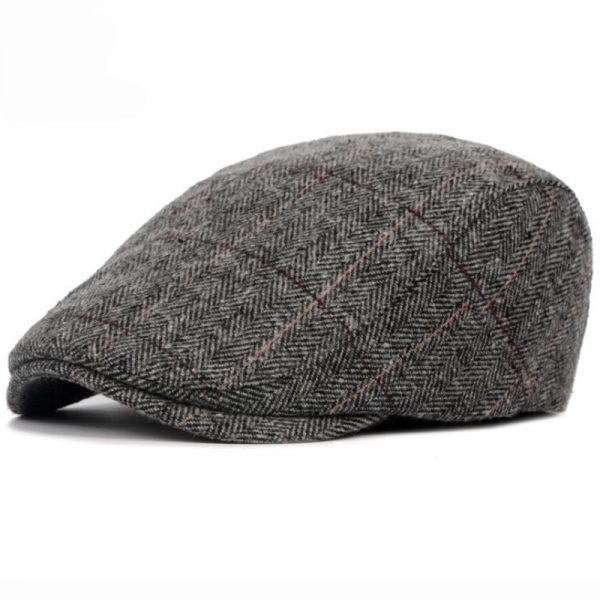A flat cap (sometimes “scally cap”) is a rounded cap with a small stiff brim in front, originating in Ireland. The hat is known in Ireland as a paddy cap, in Scotland as a Bunnet, in Wales as a Dai cap, in New Zealand as a cheese-cutter, and in the United States as a driving cap. Cloths used to make the cap include wool, tweed (most common), and cotton. Less common materials may include leather, linen, or corduroy. The inside of the cap is commonly lined for comfort and warmth.
History
The style can be traced back to the 14th century in Northern England, when it was more likely to be called a “bonnet”. This term was replaced by “cap” before about 1700,except in Scotland, where it continues to be referred to as a Bunnet in Scots.
A 1571 Act of the English Parliament was enacted to stimulate domestic wool consumption and general trade. It decreed that on Sundays and holidays, all males over 6 years of age, except for the nobility and “persons of degree”, were to wear woolen caps or pay a fine of three farthings (0.75 penny, or about £0.003) per day. The Act was not repealed until 1597, though by then the flat cap had become firmly entrenched as a recognized mark of a non-noble person, such as a burgher, a tradesman, or an apprentice. The style may have been the same as the Tudor bonnet still used in some styles of academic dress.
In the 19th and early 20th centuries, when men predominantly wore some form of headgear, flat caps were commonly worn throughout Great Britain and Ireland. Versions in finer cloth were also considered to be suitable casual countryside wear for upper-class Englishmen. Flat caps were worn by fashionable young men in the 1920s. Boys of all classes in the United Kingdom wore flat caps during this period.
In the United States, the caps were worn from the 1890s. The cap grew in popularity at the turn of the 20th century and was at the time standard boys’ wear. They were worn to school, for casual wear, and with suits. Flat caps were almost always worn with knicker suits in the 1910s and 1920s. Both flat caps and knickerbockers declined in popularity during the 1930s. The flat cap made its way to southern Italy in the late 1800s, likely brought by British servicemen. In Turkey, the flat cap became the main headgear for men after it became a replacement for the fez, which was banned by Mustafa Kemal Atatürk in 1925.







